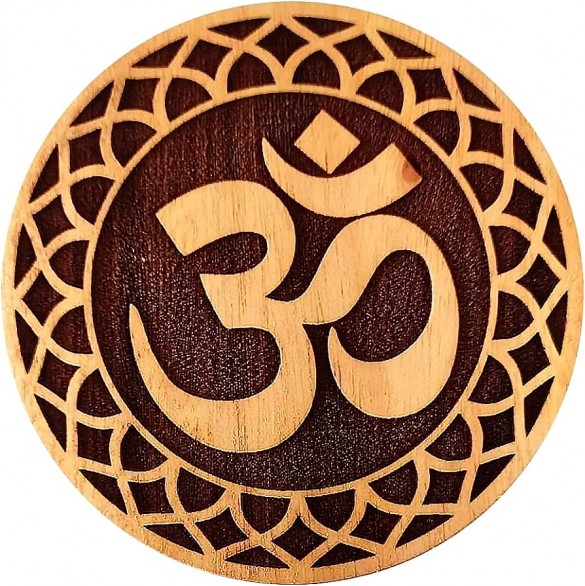
Om, pronounced as "Aum," is one of the most sacred and potent symbols in Hinduism and other Dharmic religions. It is a mystical syllable that holds immense spiritual significance and is considered the primordial sound of creation. Revered as the sound of the cosmos and the essence of existence, Om encapsulates profound meanings and serves as a powerful tool for meditation and spiritual awakening. Om, the sacred sound of universal harmony, holds a special place in the hearts of millions as a symbol of the Divine and the essence of existence. It serves as a potent tool for meditation, spiritual growth, and self-realization. Embracing Om enables seekers to connect with the cosmic rhythm, transcend the limitations of the material world, and journey towards the ultimate truth – the oneness that pervades all creation.
Om is often described as the sound of oneness that pervades the universe. It is believed to represent the ultimate reality (Brahman) that transcends all dualities and unifies the various aspects of existence. The three sounds that make up Om (A-U-M) symbolize the cycle of creation, preservation, and dissolution, representing the eternal rhythm of life. In Hindu cosmology, Om is considered the primordial sound that emerged during the creation of the universe. It is said to be the first sound that resounded across the cosmos, giving birth to everything that exists. Chanting Om is believed to connect individuals with the creative forces of the universe and align them with the divine source of all life. Om is often regarded as a sacred symbol representing the Divine. It is frequently used as a visual representation in Hindu art and architecture. The symbol is seen in temples, on religious scriptures, and as a part of traditional prayer practices. Its presence symbolizes the Divine's omnipresence and serves as a reminder of the ultimate reality beyond the physical realm.
Om is considered a seed mantra, and the chanting of this sacred syllable is believed to have profound effects on the body, mind, and soul. The vibrations produced while chanting Om are said to resonate with the energy centers (chakras) of the body, promoting inner harmony, peace, and spiritual growth. Om is a central element in meditation practices in Hinduism and Yoga. Chanting Om can help calm the mind, focus attention, and lead to a state of inner stillness and awareness. It is often repeated as a mantra during meditation to facilitate a deeper connection with the Divine and to transcend the limitations of the material world.
The significance of Om extends beyond the boundaries of Hinduism. It is embraced by various spiritual seekers and practitioners worldwide, including those on the path of Yoga, Buddhism, and Jainism. The universality of Om lies in its ability to resonate with the innermost self and invoke a sense of unity and connection with the cosmos. Om is considered a powerful tool for self-realization and spiritual liberation (moksha). It serves as a guiding light for seekers on their journey to understand the true nature of the self and the interconnectedness of all life. Chanting Om with sincere devotion is believed to dissolve the ego and lead to a state of transcendence. In the profound vibrations of Om, seekers find solace, guidance, and a profound reminder of their eternal connection with the Divine and the timeless wisdom that resonates through the cosmos.
Also read -Hinduism and Art: An Eternal Journey of Spiritual Expression
The Role of Yoga and Meditation in Hinduism: A Path to Spiritual Awakening